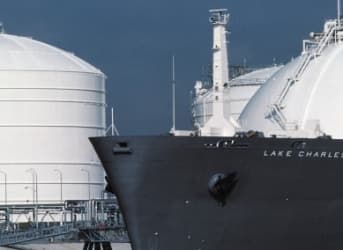The oil industry is facing rising debt from collapsing oil prices, but there could be another sector that becomes a casualty of the low oil price environment: liquefied natural gas (LNG).
Much of the global LNG trade occurs in Asia, where buying and selling occurs according to long-term fixed contracts that are indexed to the price of oil. As a result, when oil prices were high, so were LNG prices. That is exactly why there has been a rush along the U.S. Gulf Coast to begin exporting cheap American natural gas to take advantage of high prices in Asia.
The practice of indexing LNG contracts to the price of oil was something that Japan, the world’s largest consumer of LNG, had hoped to change. High oil prices were inflicting an economic toll on Japan, which had radically increased energy imports after shuttering its nuclear reactors. However, oil-indexed contracts cut both ways. Now with oil prices hovering around $50 per barrel – less than half of what they were last summer – spot cargoes for LNG have seen their prices collapse as well. Japan is in no hurry to see the industry undergo dramatic reforms.
Related: Russia-China Deal Could Kill U.S. LNG Exports
Not only are low oil prices pushing down LNG prices, but demand in Asia for LNG is much lower than anticipated. In fact, a new Wood Mackenzie analysis says that weak demand in China, Japan, and Korea helped push LNG prices below $10 per million Btu at the end of 2014, less than half of the $20/MMBtu spot cargoes were selling for earlier in the year.
Adding to the sector’s problems is the fact that new supplies are starting to come online. A massive build out of LNG export capacity is still underway, with earlier projects now reaching completion. Just as the shale boom led to oversupply and crashing prices, LNG markets are showing early signs of a similar bust.
Last year, ExxonMobil brought online its Papua New Guinea project and ramped up to full capacity, helping to supply Asian customers with 6.9 million tonnes of LNG per year (mtpa). But new supplies in 2014 were nothing compared to what is coming down the pike. An estimated 100 mtpa of new liquefaction capacity is set to hit the market between 2015 and 2018, which will be about a 35 percent expansion over last year’s total global capacity of 290 mtpa.
Demand may struggle to handle all the new supplies, which could keep prices much lower than expected. That spells trouble for the spate of projects under construction as well as the ones set to begin operations this year.
For example, Gladstone LNG, a massive project on the northeast coast of Australia that just began operations, is under pressure. The project involves producing natural gas from coal seams, and then liquefying and exporting the gas through a newly constructed terminal. Santos, the lead on the project, may be forced to writedown some of the losses, according to a Citi report. BG Group may also take a $2 billion impairment charge for its own LNG project nearby.
Related: LNG Export Hopes Fading Fast For US
U.S. LNG projects are facing pressure too. Cheniere Energy is leading the pack with its Sabine Pass export terminal, which is expected to come online in late 2015. But the company has taken on a lot of debt to build and retrofit its export facility. Cheniere has about $9 billion in debt with just $791 million in cash. That may not be a problem since Cheniere has customers contracted out for much of its export volume, but if its customers choose to suspend deliveries, Cheniere will take in much less than expected.
Still, Cheniere is much better positioned than other LNG projects, precisely because it is at the front of the line. For many projects that have not achieved final investment decisions, they could be scrapped altogether. At current prices, most greenfield LNG projects are not economical.
ADVERTISEMENT
Without a rise in oil prices, 2015 is looking like a grim year for LNG exporters.
By Nick Cunningham of Oilprice.com
More Top Reads From Oilprice.com:
- Is The Canadian LNG Export Dream Dead?
- US Sees Huge Energy Opportunity In Europe
- US LNG Exports Receive Major Boost



















Why are the LNG prices indexed to oil prices anyway?